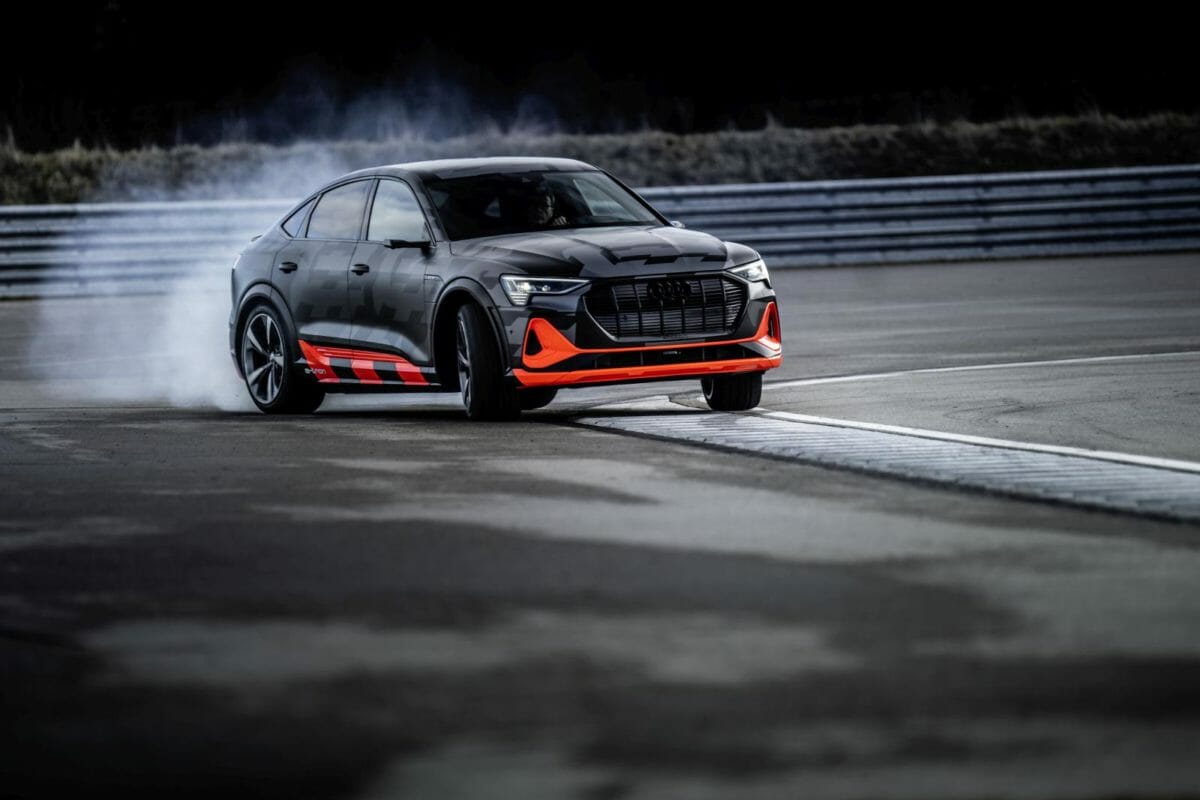It has been about 40 years since Audi’s famed ‘quattro’ all-wheel-drive system set new benchmarks for road-going cars. With mobility now shifting into an electric paradigm, Audi looks all set to place new markers for the competition.
The brand is now using the knowledge it has accumulated in this area since 1980 for the next step. The electric quattro in the models of the e-tron range marks Audi’s next milestone achievement in the age of electric mobility. The four-ringed brand has worked on a fundamentally new quattro drive architecture for electric models. It has been optimized to distribute drive torque in the longitudinal and transverse direction to maximise efficiency while offering dynamic performance in variable situations.

Why This Move?
For Audi, the Electric Quattro is the perfect combination of powerful performance and high efficiency, they can thus combine the efficiency advantages of a driven axle with the traction and dynamic performance of an all-wheel-drive system. In the current E-Tron model range, only the rear wheels propel the car in good traction conditions, while the motor for the front-wheel-drive concurrently runs without being energized. Since the motor is an asynchronous type, there are no inherent electrical drag losses, so that this drive layout consumes a correspondingly low amount of energy. The front axle – within milliseconds and unnoticeably for the driver – is additionally activated only as needed – for instance, when there is a demand for high driving dynamics, high torque transfer, or in the case of a low coefficient of friction due to wetness, mud or snow.
What’s Different?
Audi is the first manufacturer to enable highly variable torque distribution in the E-Tron S due to the drive topology featuring one motor at the front axle and two electric motors installed in a housing on the rear axle. In combination with sophisticated control and regulation, the electric Quattro, with its single-axle operation with variable, unnoticeably additional activation of the front axle, resolves the conflicting aims of dynamic performance and efficiency. Audi integrates functions such as electric torque vectoring on the rear axle, wheel-selective torque control due to a braking intervention with the mechanical differential, and high recuperation performance in an electric powertrain. Additionally, drivers can adjust the high variability of the system to their personal preferences by individual program selections.
The Magic Moment
The electric all-wheel drive is active in situations of degrading grip on road surfaces with low coefficients of friction, in particularly dynamic driving conditions, when the driver demands high traction power, or when maximum recuperation is desired – in other words, the recovery of energy during braking and deceleration. If the driver decelerates the car, the electric motors act as generators, using the car’s kinetic energy and converting it into electrical energy which, in turn, charges the battery. This applies to more than 90 per cent of all braking manoeuvres in everyday driving situations.
Also Read: Audi Makes Use Of Drones To Facilitate Easy Car Dispatches
Only when stronger pedal pressure is applied, the system additionally and seamlessly activates the hydraulic wheel brakes. For instance, in a braking event at 100 km/h, the E-Tron S can recover kinetic energy with an output of up to 270 kW, compared to 250 kW in the Formula E electric racing series. If the driver demands full power while accelerating, the E-Tron S models provide a total boost of 370 kW and torque of 973 Nm. Whether in drive or recuperation mode, interconnected control models always select the best torque distribution.
The Best Part
Drivers can adapt the electric Quattro as desired via two controllers. The Audi drive select system, which is standard equipment for the E-Tron models, offers seven profiles: comfort, auto, dynamic, efficiency, individual, allroad and offroad. Thus, among other things, the electric all-wheel drive, as well as the suspension and other systems, can be adapted to the road conditions and personal preferences.
The electronic stability control (ESC) system contains four programs: Normal, Sport, Offroad and Off. In offroad conditions, it optimizes stability, traction and brake control, and activates the standard hill descent control system. In addition, drivers can select three levels of deceleration recuperation: In level 0, the car coasts, in level 1, the car slightly decelerates. In level 2, which has a deceleration range of up to 0.13 g and recuperates the largest amount of energy, drivers experience a strong one-pedal feel. In manual mode, the car retains the previously selected recuperation level. All this combine to be a precise and powerful package which can be easily and completely controlled by the driver to their taste.
